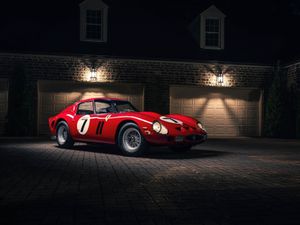This Ferrari 250 GTO just sold for £42m at auction
Model is the most expensive Ferrari to go under the hammer

A Ferrari 250 GTO became the second-most expensive car sold at auction when it went under the hammer yesterday (November 13) in New York.
Achieving a figure of $51.7m (£42.1m), including fees, the 1962 Ferrari 330 LM/250 GTO is one of the most celebrated models from the Italian firm, with only 36 produced. Famous owners include fashion designer Ralph Lauren and Pink Floyd drummer Nick Mason.
Becoming the most expensive Ferrari to ever go under the hammer, it exceeded the previous record of $48.4m (£39.4m) for a separate Ferrari 250 GTO sold in 2018. Despite the huge figure, it is still a long way off the overall auction record of $142m (£115m) that was achieved for a Mercedes 300 SLR Uhlenhaut Coupe, previously owned by the official Mercedes museum, at a private auction in 2022.

This 250 GTO, chassis number 3765, is the only example raced by Scuderia Ferrari itself, competing at in-period events such as the Nurburgring 1000km and the 1962 24 Hours of Le Mans. it was originally configured as a 330 LM, before being converted to a 250 GTO in 1962.
Offered for sale for the first time in 40 years, it was previously owned by a chairman of the Ferrari Club of America.
The 250 GTO was sold by RM Sotheby’s as part of a week of sales dedicated to ‘Modern and Contemporary Art’– rather than a conventional car auction – in New York yesterday.
Gord Duff, global head of auctions at Sotheby’s, said: “Celebrating this sale during Sotheby’s marquee week highlights the unparalleled stature of this Ferrari as one of the world’s most desirable objects.
“The result, achieved through collaboration between Ferrari, RM Sotheby’s, and Sotheby’s, echoes our mutual pursuit of perfection – mirroring the very ethos Enzo Ferrari embodied when designing this car.
“Fetching $51.7m [£42.1m], this transaction adds a new chapter to a vehicle with an unmatched legacy. Now, it ranks among the most expensive cars sold at auction, a true testament to its singular place in history.”





